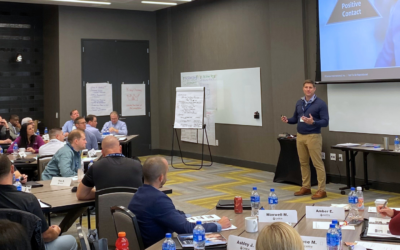Organizations that take a one-dimensional approach to virtually any type of corporate strategy will rarely be positioned to enjoy long-term performance improvements and optimal operational outcomes. This is especially true when looking at employee training programs, and is even more important in terms of leadership development, as creativity, engagement and fulfillment are critical characteristics of staff betterment.
Those in charge of selecting leadership training programs, creating them or delivering the content should always think outside of the box, working to identify ways to bolster engagement and pique interest among participants. Sometimes, the last technique to be thought of in this process will end up being the most effective in terms of maximizing knowledge retention among new managers, supervisors and executives.
Creative lens
CLO Media recently suggested that counterintuitive thinking and problem-solving activities are extremely effective tools in the leadership development process, especially because of the unique skills participants will hone in on while going through these processes. Workplaces continue to become more diverse amid globalization and other trends, while leaders are also tasked with supporting their employees through complex and novel challenges that exist in a constantly evolving marketplace.
The better a manager is at problem-solving and thinking creatively to achieve objectives in the most efficient and consistent fashions possible, the more successful his or her employees will be. According to the news provider, too many firms try to identify and correct issues in a new manager’s style and general characteristics, which would essentially be the exact opposite of creative thinking.
Instead, leadership development programs should instill confidence in managers, working off strengths and already present aptitudes more than the weaker aspects. The source suggested that measurement of these programs is critical to ensure that new techniques are yielding the desired outcomes, and surveying employees underneath the leaders is often the best indication of success or failure.
Back it up with mentoring
Becoming a manager is often a very difficult pursuit, especially for newer, younger employees who have not completely acclimated to the corporate culture. Especially when new techniques and strategies are at play in leadership development programs, enterprises can ensure a more comfortable process for their managers by pairing them with mentors who have longer tenures.
Mentoring programs have been found to bolster continuity of operations during a transitionary period in the leadership structure, all the while boosting engagement among younger managers.





